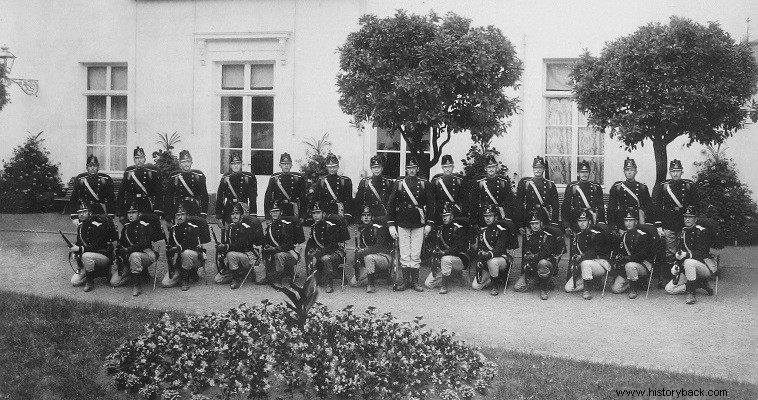
The history of the small state of Luxembourg begins in the 10th century AD. when the half-ruined Roman fortress of the "little castle" was given to Count Sigrifid I.
The small state was upgraded to a duchy in 1354. Since then it was controlled sometimes by the French and sometimes by the Habsburgs. It officially became an independent state in 1815 after Waterloo. On the eve of World War II, the duchy had a population of around 300,000.
The duchy was ruled by Grand Duchess Carlotta. Her husband, Prince Felix was honorary commander of the small gendarmerie. This corps, called the Corps of Gendarmerie and Volunteers, was founded in 1881. On the eve of the war, it had six officers and 300 non-commissioned officers and soldiers. Its commander was Major Emil Speller.
Shortly after the German invasion of Poland, namely on September 15, 1939, a volunteer force company of 125 men was formed and subordinated to the Gendarmerie Corps. The total of 425 men formed 10 platoons of 40 men each. Each platoon extended three battle groups.
At the same time, another corps, the Royal-Ducal Gendarmerie Company, was made up of permanent police officers and had a strength of 13 officers and 255 non-commissioned officers and policemen. Overall the fighting strength of the Luxemburg was no more than that of an infantry battalion, not even having heavy infantry weapons available.
At the beginning of 1940 and in view of the now clear German threat, the "Schuster" Line was created, a set of 41 cm of concrete made machine guns, 18 roadblocks and as many other fortifications that protected bridges, opposite the German border.
Another five roadblocks were set up across the French border as more of a political distraction. Of course none of this could hold back the German wave when it was unleashed in May 1940.
